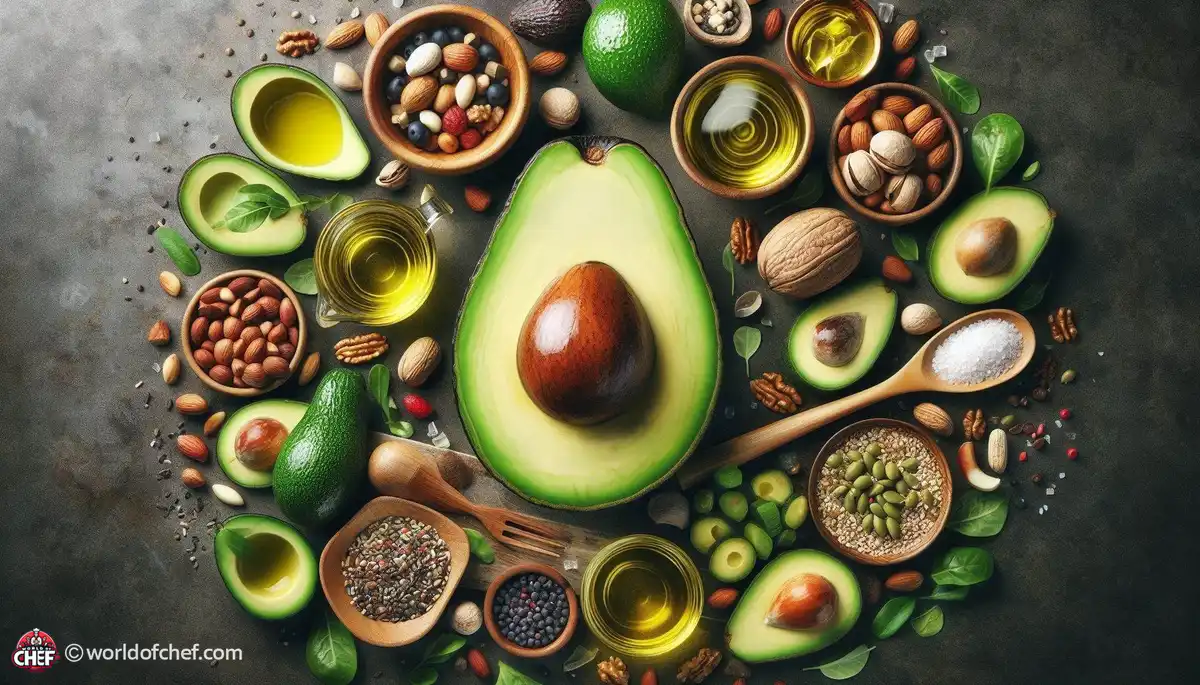
Dinner Delights: High-Fiber Recipes for Every Palate
Clarence Guido - Oct 7, 2024 - 7 min read


Dietary fats have had a bad name. The reality is, these nutrients are essential to our survival. They provide us with energy, aid in the absorption of nutrients, and support many of the functions in our bodies. However, not all fats are created equal. From the various forms of fats, two come into view: saturated and unsaturated fats.
The saturated fats are found primarily in animal products-animal meats and dairy, as well as some plant oils, such as Coconut Oil and palm oil. They get their name because the carbon atoms are saturated with hydrogen atoms; that is, they contain no double bonds between carbon atoms. This configuration makes them solid at room temperature. On the other hand, unsaturated fats have one or more double bonds between carbon atoms along their fatty acid chains. As a result, this chemical structure tends to be in liquid state at room temperature.
Saturated fats have been associated for many years with adverse health effects attributed to overconsumption. These substances are known to increase the levels of LDL cholesterol often referred to as "bad" cholesterol, thereby probably increasing the risks for heart disease and stroke. On the other hand, unsaturated fats- particularly monounsaturated and polyunsaturated fats- were touted to be linked with some Health Benefits. These fatty acids may reduce LDL cholesterol levels and the risk of cardiovascular diseases if a well-balanced diet is being followed.
One of the most apparent differences of saturated and unsaturated fats is their physical characteristics. The fatty acids in saturated fats have no double bonds and therefore pack closely together, giving these lipids a solid nature at room temperature and an appearance like firmer or waxier materials. Also, unsaturated fats are generally liquid at room temperature, as the double bonds cause kinks in the chains of fatty acids and do not allow for close packing.
Dietary sources of saturated fat: Animal products are: Beef, pork, and meat, poultry, Butter and cheese, and so on
Other plant oils may provide saturated fats in abundance, like coconut oil or palm oil. Unsaturated fatty acids are primarily found from oil sources of plants with types such as olive, Avocado, and canola. Other examples include Fatty Fish such as salmon, trout, and mackerel, which contain a rich amount of omega-3 fatty acids. These are unsaturated fats with benefits on heart health.
The differences in the physical properties between the two also dictate the use in their preparation. For example, saturated fats have high melting points, which makes them more stable; thus they are well suited for frying and baking in which high amounts of heat are applied. They impart rich flavors to foods and desired texture. Unsaturated fats are less stable and tend to get oxidized quickly when exposed to heat or light. Because of this, they must be applied in low-heat preparation methods like sautéing or as dressings for salads and vegetables.
Health effects of saturated and unsaturated fats have long been an area of controversy with studies and discussions still continuing up to this present day in the nutrition and public health fields. Even though saturated fats have long been blamed for adverse cardiovascular events, primarily high LDL cholesterol levels, study results published recently challenged such thinking. Some studies have shown that the type of saturated fat and the source for which it is taken into the body may determine their health effects.
In contrast, unsaturated fats- notably polyunsaturated fats, such as omega-3 and omega-6 fatty acids - have recently been much more in the news due to their potential protective roles in preventing diseases such as heart diseases, diabetes, and other cancers. Such fats play crucial roles in maintaining healthy cell membranes, but they also support brain health and modulate inflammation. Consumption from sources including nuts, seeds, and oily fish should be a component of any well-rounded diet.
It is only at the end that moderation and balance make it possible to reap the benefits of both saturated and unsaturated fats. While one must indeed limit their intake of foods high in saturated fats such as red meat and full-fat dairy products, complete elimination is not always necessary and even advisable. Instead, focus on the substitution of saturated fats with healthier fats, such as unsaturated fats from plant sources, while focusing on whole foods and a broad spectrum of nutrients for health and wellness. With such a strategy, you can best balance the intake of fats to maintain optimal health and longevity.

Clarence Guido - Oct 7, 2024 - 7 min read

Logan Trowbridge - Oct 6, 2024 - 7 min read

Wayne Tobar - Oct 4, 2024 - 8 min read

Harry Puga - Oct 3, 2024 - 9 min read